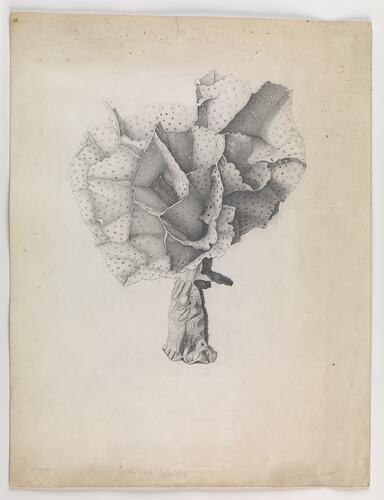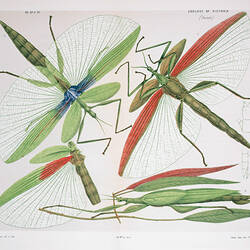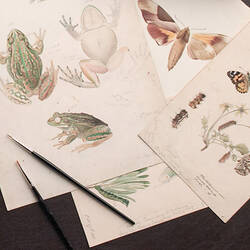Summary
This scientific illustration by James Ripper of the bryozoan Adeona cellulosa
Description of Content
Adeona cellulosa (MacGillivray, 1869) by James Ripper. Illustration, pencil on paper, for Plate 47 in The Prodromus of the Zoology of Victoria by Frederick McCoy.
More Information
-
Collection Names
-
Collecting Areas
-
Publisher
-
Artist
-
Lithographer
-
Medium
Pencil
-
Technique
Illustration
-
Support
Paper
-
Plate Number
47 Figure 1
-
Drawing Number
Unnumbered a Ripper
-
State
Illustration
-
Classification
-
Taxon Name
-
Author and date of publication
(MacGillivray, 1869)
-
Preferred Common name
bryozoan
-
Kingdom
-
Phylum
-
Class
-
Order
-
Suborder
-
Infraorder
-
Superfamily
-
Family
-
Genus
-
Species Name
cellulosa
-
Category
-
Discipline
-
Type of item
-
References
[Book Series] McCoy, Frederick. 1878-1890. Natural History of Victoria: Prodromus of the Zoology of Victoria or Figures and Descriptions of the Living Species of All Classes of the Victorian Indigenous Animals. 1-2.
[Article] Yen, Alan L., et al. 2001. McCoy's Prodromus of the Zoology of Victoria: an unfinished task. Vic. Nat. 118 (6): 242-255.
[Article] Bock, Philip E. 2001. The Bryozoa of McCoy's Prodromus. Vic. Nat. 118(6) McCoy Special Issue, Part 2: 256-265.


